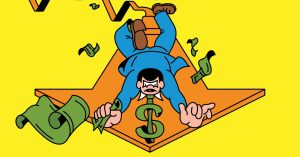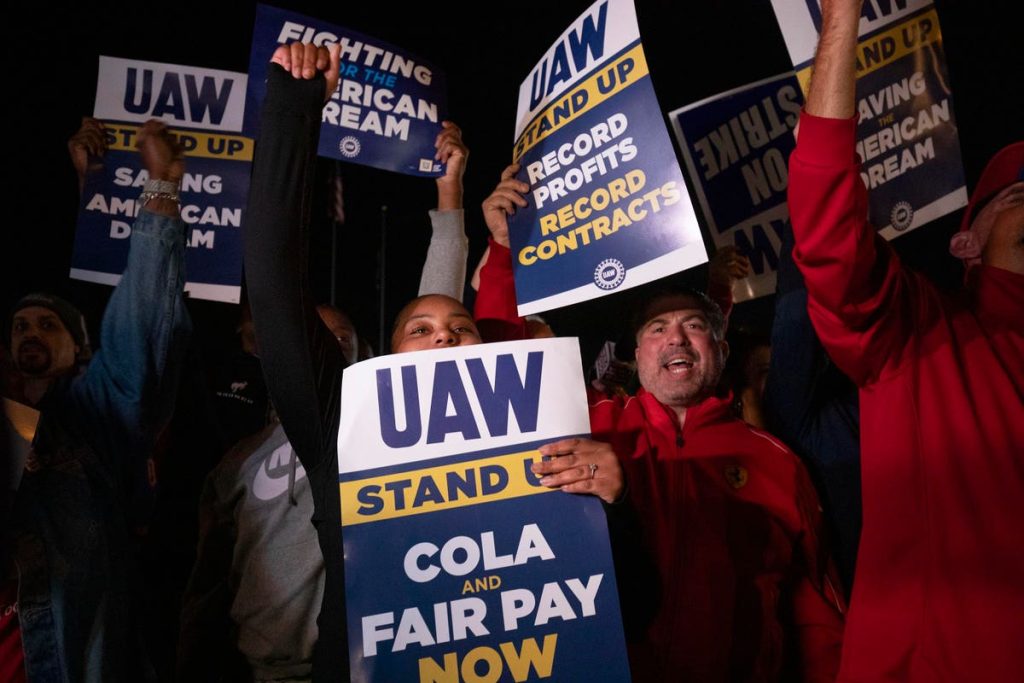Last week, the United Auto Workers (UAW), which represents employees of GM (General Motors), Ford, and Stellantis (that owns Jeep, Ram, Chrysler, Dodge, and Fiat brands), went on strike. Apart from its implications for the auto industry and U.S. Presidential politics, this strike points to contradictions in the environmental, social, and governance (ESG) approach to running the modern firm. Why so?
In the 21st century, some might say that businesses are transformed because they do not focus solely on maximizing shareholder wealth. Contrary to the so-called Friedman doctrine, businesses are embracing climate issues, adopting transparent governance practices, recognizing their social obligations, and treating their labor force and communities with respect. This transformation has a descriptor: ESG.
The “Detroit Three” are supposed to be ESG role models. General Motors (GM) prides itself as an ESG leader and a climate champion. Its emission targets are verified by the Science-Based Targets initiative. GM has even asked its suppliers to sign an ESG pledge where “suppliers commit to achieving carbon neutrality for Scope 1 and 2 emissions and confirm they have advanced management systems in place for labor and human rights, ethics and sustainable procurement practices through a third-party assessment by EcoVadis.”
Ford Motor Company is also an ESG leader. It has extensive involvement with the CDP (formerly Caron Disclosure Project), and the UN Sustainability Development Goals. It has adopted a sustainability financing framework, which “covers funding of environmental and social projects … and guides how projects are evaluated, selected, managed, and reported.”
Stellantis prides itself as an ESG leader as well. It publishes an annual corporate social responsibility (CSR) report. It has identified six CSR macro-risks and addresses them following the UN Sustainable Development Goals guidelines. It wants to achieve carbon net-zero emissions by 2038.
So, why are these ESG leaders facing a strike, and what does this episode tell us about ESG’s problems?
ESG as the new and improved CSR
In a commentary co-authored with Jennifer Griffin, we made the argument that ESG is the old CSR wine in a new bottle. The reason is that both offer very similar guidelines on how corporations should think about their economic and social purposes.
Howard Bowen’s 1953 book, Social Responsibilities of the Businessman launched the CSR movement. Thus, this movement emerged during the cold war, with vigorous debates on merits of capitalism and socialism. The hope was that as the social welfare state and the New Deal changed the nature of the government, CSR would change the nature and purpose of the corporation.
CSR outlived the cold war and got a second life as the failings of the so-called “Washington Consensus” became evident and the backlash against globalization gathered speed (remember the 1999 Seattle riots at the World Trade Organization meeting). In 2000, Kofi Annan, the United Nations Secretary-General, announced the Global Compact, an attempt to translate CSR into an actionable global program.
CSR in general and even programs such as the Global Compact lack a verifiable metric. ESG corrects this by outlining how to assess companies’ social and environmental activities, along with governance transparency. While the world awaits a universal ESG metric, established frameworks have emerged which outline specific ESG obligations and how companies’ compliance with them might be monitored.
ESG is criticized by conservatives as “woke capitalism.” But beyond the ideological debates and cultural wars, ESG has fundamental conceptual problems that the UAW strike highlights: the conflict among environmental, social, and governance aims.
UAW strike and ESG problems
The U.S. auto industry faced bankruptcy during the 2007-2009 recession and the federal government bailed it out. This $80 billion bailout protected jobs, shareholders and creditors. With this lifeline, auto companies revamped their operations and did well in the subsequent decade, earning over $250 billion in profits.
How should profits be split in the future – a core issue in CSR/ESG debates?
The UAW wants a pay increase of 40% while the companies have offered 30%. Companies defend their offer by claiming that they need funds to retool their factories to produce electric vehicles (EVs). This change would impose a smaller financial risk if EVs were making money. By some accounts, these companies lose money on EVs even with federal subsidies. Ford, for example, lost $2.1 billion in 2021 and is expected to lose $4.5 billion in 2023. Moreover, the Detroit Three fear competition from EV companies (such as Tesla and Rivian) with non-unionized workforce.
This strike reveals three conflicts. The first conflict is about dividing profits between the top management and labor. GM’s CEO Mary Barra, made $29 million in 2022, which is 362 times the median GM employee compensation. Ford’s Jim Farley made $21 million, which is 281 times that of an average Ford employee and Stellantis’ CEO Carlos Tavares made $24.8 million, 365 times that of an average employee. So, why can’t workers have some more?
The issue of low worker compensation is worse in EV component factories. A worker at Ultium Cells, GM-LG Electronic joint-venture battery plant in Lordstown, Ohio (also the sito bte of a closed GM factory and a recipient of massive federal subsidies), makes a starting hourly wage of $16.50. UAW President Shawn Fain notes that “a newly hired Ultium worker would have to work full time for 16 years to earn what Mary Barra makes in a single week.”
The second conflict is about dividing profits between labor and shareholders. To boost share prices, in the last twelve months, auto companies have bought back their shares worth $5 billion (for reference, until 1982, such buybacks were banned because they were considered to be stock manipulation). This means that companies prioritize shareholders’ wealth over worker’s compensation, which contradicts ESG principles.
The third conflict is about devoting profits to climate goals as opposed to protecting union jobs and increasing labor compensation. In response to governmental mandates, the auto industry is switching to EVs from internal combustion engines. Because EVs have fewer components (such as mufflers, catalytic converters, or fuel injectors), they require fewer workers per car. And of course, with no oil change, your neighborhood Grease Monkey will be in trouble.
Might the fired workers find jobs in the new emerging industry? EV manufacturing in the US, including its supply chain, tends to takes place in non-unionized factories. Many Japanese, Korean, and German companies have factories in “right-to-work states” where unionization is difficult and wages are lower. Further, Tesla’s factories are not unionized, even in Fremont, California.
Apart from the fact that an Ohio auto worker might find it difficult to relocate to the new battery plant in Georgia (which probably has received federal subsidies), the wages are lower in the new, non-union jobs. This is why the UAW wants auto companies to ensure that their supply chain (such as joint ventures to produce batteries) use union labor or at least pay comparable wages as unionized plants, lest there is a race to the bottom.
UAW President Shawn Fain notes: “We have been absolutely clear that the switch to electric engine jobs, battery production and other EV manufacturing cannot become a race to the bottom. Not only is the federal government not using its power to turn the tide – they’re actively funding the race to the bottom with billions in public money.”
Rethinking Just Transition
Climate mitigation imposes costs on specific industries to create a global public good. Those losing jobs believe that they shoulder the burden of saving the world. To add insult to their injury, affected workers wonder if their sacrifice is in vain because China is opening 2 coal power plants every week.
This is why the notion of “just transition” is important. The idea is that policymakers must ensure that fossil fuel producing communities are protected during energy transition. Much of the focus has been on coal communities. This made sense because moving from coal to renewables to generate electricity is the most critical pathway to decarbonization.
But the UAW strike shows that the “just transition” debate now extends to fossil fuel-using sectors, not just fossil fuel-producing ones. The auto industry is on this list because it faces a climate mandate of shifting to EVs. But other industries such as aluminum, steel, cement, tourism, and airlines are on the list as well. Thus, climate policies will cause a significant disruption in what we produce, how, and where. Without a policy framework to manage this great disruption, social and political strife will increase.
In sum, the UAW strike reveals a fundamental dilemma in implementing ESG. While the issue of pay hikes and the more equitable distribution of profits will probably get resolved soon, given the political clout of the Midwestern states in U.S. Presidential politics, the more fundamental tension between climate goals (E in ESG) and jobs (S and G in ESG) remains unresolved.
A new social contract is needed to protect both climate and workers. But how? With the unpopularity of carbon pricing and the impossibility of permanently financing energy transition via budgetary deficits (as the Inflation Reduction Act seems to be doing), the core issue of who will bear the cost of climate policy remains unresolved. Hiding behind ESG and hoping that corporations can figure this out is simply kicking the can down the road.
The scientific case for climate action is very strong. But the political case remains weak, especially if you work in climate-exposed sectors that produce or use fossil fuels. This is because climate policy creates winners and losers. By dropping the win-win narrative, we can think more creatively about how to manage the transition costs in order to avoid massive social and political disruption.
Read the full article here










